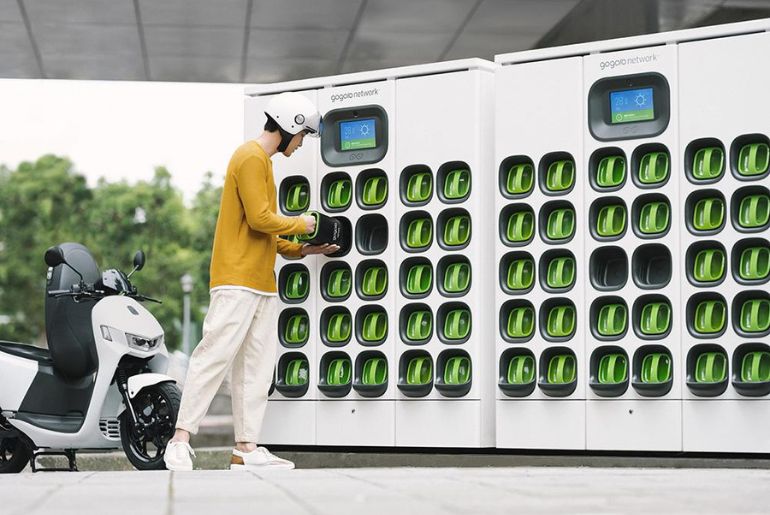India’s electric mobility sector is buzzing with innovation, policy support, and increasing consumer demand. One of the most talked-about trends recently is the concept of battery swapping. This emerging solution is rapidly gaining traction, offering a practical approach to tackle two of the biggest challenges faced by the electric vehicle (EV) ecosystem in India—long charging times and lack of widespread charging infrastructure.
Battery swapping involves replacing a discharged battery of an electric vehicle with a fully charged one at a swapping station. Instead of waiting for the battery to charge, which can take anywhere from 30 minutes to several hours depending on the charger, EV users can simply “swap” the battery in just a few minutes, similar to refueling a petrol or diesel vehicle.
India’s e-mobility sector is primarily driven by electric two-wheelers (E2Ws), three-wheelers (E3Ws), and light commercial vehicles. These segments are highly sensitive to factors like affordability, time efficiency, and easy access to infrastructure.
Battery swapping addresses these concerns:
- Reduces Upfront Cost: Batteries account for 40-50% of the total cost of an EV. Battery swapping decouples battery ownership from the vehicle, meaning users pay for the vehicle without the battery, significantly lowering the upfront cost.
- Saves Time: Swapping a battery takes less than five minutes, compared to the long wait times for charging.
- Solves Infrastructure Challenges: India currently lacks a dense network of EV charging stations. Establishing battery swapping stations requires less space and investment compared to charging stations.
- Supports Commercial Fleets: Delivery services, ride-sharing platforms, and e-commerce companies prefer solutions that minimize downtime. Battery swapping is ideal for their business models.
Government Push for Battery Swapping Policy
Recognizing its potential, the Indian government announced a Battery Swapping Policy in the Union Budget 2022-23. The policy aims to standardize battery specifications and promote the use of Battery-as-a-Service (BaaS) models. Under BaaS, consumers can subscribe to battery services, reducing the financial burden and offering flexibility.
Some key highlights of the proposed policy include:
- Interoperability: Standardizing battery types across various EV manufacturers to ensure compatibility.
- Incentives: Providing subsidies for companies setting up swapping stations.
- Data Sharing: Creating a unified platform for real-time data on battery health, location of swapping stations, and payment gateways.
As per NITI Aayog, battery swapping can cater to over 40% of the total electric two and three-wheeler market by 2030 if implemented effectively.
Major Players in Battery Swapping in India
Several startups and companies have jumped into the battery swapping ecosystem, making significant strides:
- SUN Mobility: One of India’s pioneers, SUN Mobility has set up battery swapping stations across cities like Bengaluru, Delhi, and Mumbai. It has partnered with OEMs like Piaggio and Ashok Leyland to offer swappable battery solutions for electric three-wheelers and buses.
- Bounce Infinity: This Bengaluru-based startup launched its Bounce Infinity E1 scooter with swappable batteries. Users can either charge the battery at home or swap it at Bounce’s growing network of swapping stations.
- Ola Electric: Ola is reportedly working on battery swapping technology as part of its plan to expand its electric two-wheeler business. Though not yet launched, Ola’s entry into this segment will be significant, given its massive scale and market reach.
- Lithium Urban Technologies: A leading EV fleet operator, Lithium Urban Technologies is also exploring battery swapping solutions to optimize fleet efficiency.
Real-World Example: Delhi’s Battery Swapping Initiative
In 2023, the Delhi Government launched a pilot battery swapping initiative under its Delhi EV Policy. Several battery swapping stations were set up in collaboration with private players like SUN Mobility and Battery Smart. The pilot aimed to support electric rickshaws and delivery vehicles, reducing emissions and promoting green transportation.
Within months, the program reported significant success, with thousands of battery swaps taking place daily. This led to increased adoption of electric rickshaws by drivers, as they could now operate without worrying about charging downtime.
Challenges Ahead
While battery swapping holds promise, several challenges need addressing:
- Standardization: Different battery designs by different manufacturers can make interoperability tricky. The government’s role in enforcing uniform standards is crucial.
- Battery Safety: Ensuring the safety and health of swappable batteries, especially regarding thermal management, is a top priority.
- Initial Investment: Though cheaper to maintain, setting up swapping stations requires capital investment and cooperation between stakeholders.
- Consumer Awareness: Many consumers are still unaware or skeptical about battery swapping models, which requires public education campaigns.
Battery swapping has the potential to transform India’s e-mobility landscape. By offering affordable, fast, and convenient solutions, it bridges critical gaps in the EV adoption journey, especially for cost-conscious and commercial users. With robust policy support, technological advancements, and industry collaboration, battery swapping could become the backbone of India’s electric mobility revolution.
As India aims to achieve its ambitious target of 30% EV penetration by 2030, battery swapping might just be the catalyst that accelerates the journey.

